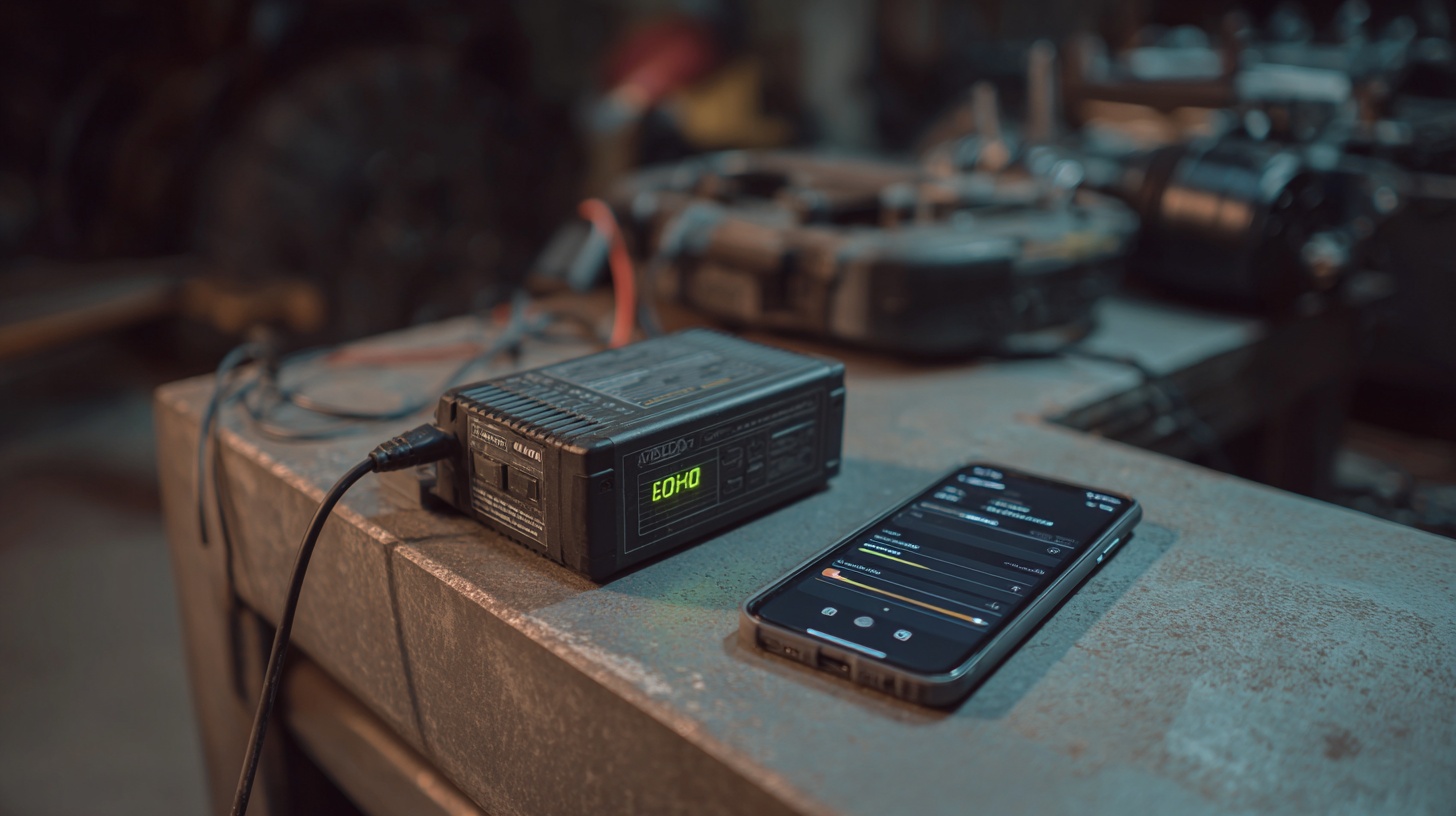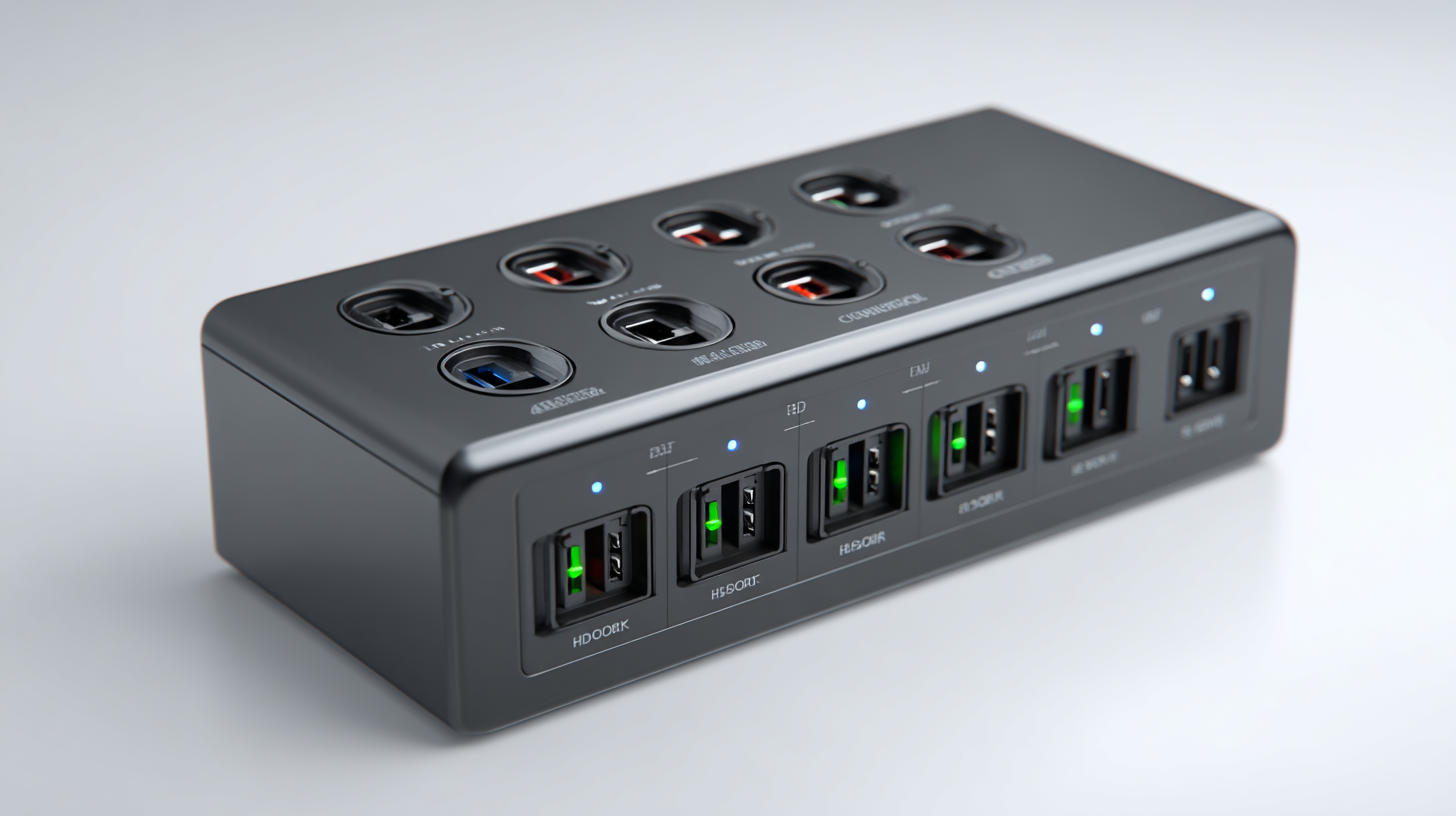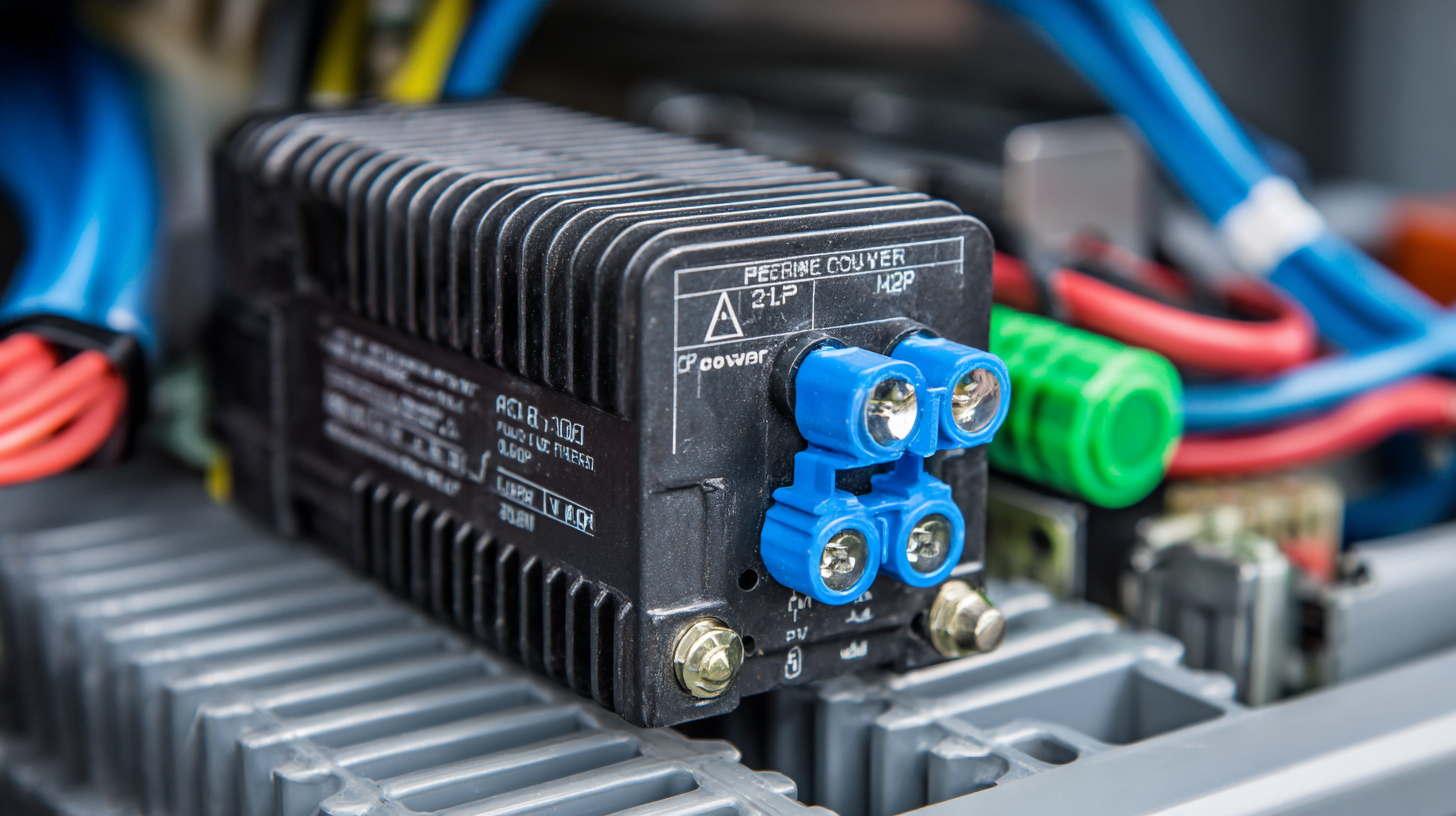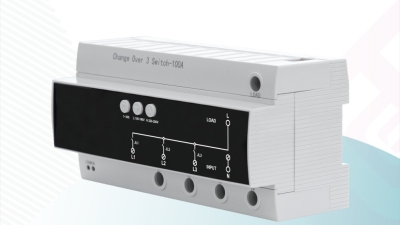The Definitive Handbook to Choosing the Right AC Power Converter for Your Needs
Table of Contents
- Understanding Different AC Power Converter Types and Their Applications
- Common Issues Encountered with AC Power Converters and How to Resolve Them
- Tips for Selecting the Most Suitable AC Power Converter for Your Devices
- Key Features to Consider When Choosing an AC Power Converter
- Safety Considerations When Using AC Power Converters
- Maintaining and Troubleshooting Your AC Power Converter for Optimal Performance
- Maximizing Efficiency in Power Management: Leveraging Best Price 60A 100A DIN Rail Intelligent Electronic Converter Changeover Switch for Optimal Energy Solutions
- FAQS
- Conclusion
- Related Posts
As more folks are looking for reliable and efficient ways to get power, it’s really important to understand the ins and outs of AC Power Converters. Honestly, these devices are playing a bigger role than ever in both everyday life and business. Just recently, I came across a report saying that the global market for power converters is expected to hit around $20 billion by 2025 — that’s pretty huge! It just shows how much these things are becoming vital in all sorts of applications.

Zhejiang Cejia Electric Co., Ltd. has been leading the charge in this space, bringing over 20 years of experience to the table. They provide tailored energy storage power solutions for a wide range of needs. And what’s great about CEJIA is their focus on quality and affordable prices — really making them a trusted partner for anyone looking for top-notch AC Power Converter solutions. It’s all about helping customers make smart choices that fit their needs perfectly.
Understanding Different AC Power Converter Types and Their Applications
When you're dealing with AC power converters, it's pretty important to understand the different types out there. Trust me, knowing what’s available can really help you pick the right one for your needs. So, for example, you’ve got step-up converters—they boost the voltage for devices that need a little extra juice. On the flip side, there are step-down converters that lower the voltage for devices that just can’t handle too much. Then, there are isolated converters—they actually keep the input and output electrically separated, which is a big plus for safety and when working in sensitive setups.
Another thing to keep in mind is the inverter. It’s the device that takes DC power and flips it back into AC. These are super common in renewable energy setups, like solar panel systems, because they let you run regular household appliances with energy generated from the sun. And if you’re after something simple, linear converters are pretty straightforward—they’re easy to use and fit well if your power requirements are on the lower side. All in all, getting to know these different types and what they’re good for will help you make a smarter choice, making sure your devices work smoothly and last longer.
The Definitive Handbook to Choosing the Right AC Power Converter for Your Needs
| Converter Type | Input Voltage | Output Voltage | Power Rating (W) | Applications |
|---|---|---|---|---|
| Linear Converter | 100-240V AC | 5-15V DC | Low-power devices, Audio equipment | |
| Switching Converter | 100-240V AC | 12-24V DC | 50-1000W | Computers, Industrial applications |
| Inverter | 12-48V DC | 100-220V AC | Renewable energy systems, Mobile applications | |
| UPS (Uninterruptible Power Supply) | 100-240V AC | 100-240V AC | 500-5000W | Critical equipment, Data centers |
| Step-Up/Step-Down Converter | 100-240V AC | Varies | Travel, International use |
Common Issues Encountered with AC Power Converters and How to Resolve Them
When you're picking out the right AC power converter, it’s really helpful to know about some common issues that can pop up—and how to tackle them effectively. A lot of folks run into problems like voltage swings, overheating, or just not getting the efficiency they need. These issues often come from different things, like choosing a converter that doesn’t quite match what your setup needs, or installing everything a bit too casually. Making sure your converter is properly rated for your power demands can seriously cut down on these headaches.
Another thing that trips people up is making sure your converter plays well with your devices, especially when you’ve got a pretty complex setup with multiple components. To avoid surprises, it’s worth taking the time to really understand what each device needs, along with the specs of your converter. Going for one with adjustable settings can be a lifesaver—giving you the flexibility to tweak the voltage and current just right. And don’t forget about regular checks! A quick peek every now and then can catch potential issues early, keeping your power supply smooth and reliable for whatever you’re working on.
Tips for Selecting the Most Suitable AC Power Converter for Your Devices
When you're trying to pick out the right AC power converter for your gadgets, the first thing you really wanna do is check out how much power each device needs. Just take a look at the label—most devices will have their voltage and current info listed there. That'll help you figure out which converter can handle what you're throwing at it, ideally one that meets or even surpasses those numbers. Also, it’s worth thinking about whether your device is kinda picky when it comes to power fluctuations. Things like laptops or medical gear—yeah, those really need a stable power output to stay safe and working properly.
Oh, and don't forget about the plug and socket stuff. Different countries have all sorts of plug shapes and voltage systems, so you'll want to make sure your converter isn’t just compatible voltage-wise but also works with your local sockets. And if you can find features like built-in surge protection or something compact and easy to carry around—big plus! Taking all these little things into account will help you pick a converter that keeps your devices safe, running smoothly, and with no fuss.
Key Features to Consider When Choosing an AC Power Converter
When you're shopping for an AC power converter, it’s pretty important to keep a few key features in mind—things that actually matter to your specific setup. First off, the capacity of the converter is definitely a big deal; it should comfortably handle the power your devices need, without risking overloads or hiccups. And let's be honest, with all the talk about energy efficiency these days, choosing a converter that’s smart about power can save you a lot of money in the long run. Oh, and don’t forget about stable output voltage—fluctuations can mess with sensitive electronics and even cause damage or performance issues.

Safety features are another must-have. Look for models that have over-voltage protection, short-circuit safeguards, and thermal shutdown functions. These features not only help keep your devices safe and extend their lifespan, but they also make operating the converter a lot safer, which is a pretty big deal. At Zhejiang Cejia Electric Co., Ltd., we totally get how important these things are. With over 20 years of experience behind us, we’re dedicated to providing high-quality energy storage power supplies. Plus, our competitive prices and reliability make it easy to find the perfect AC power converter that fits your needs without breaking the bank.
Safety Considerations When Using AC Power Converters
When you're picking out an AC power converter, safety should really be at the top of your list. I mean, the risk of getting an electric shock is no joke, especially when metal parts are exposed. It’s super important to make sure the converter has solid insulation and proper protection—they’re your first line of defense against accidents. After some recent recalls on certain models because of safety issues, I’d definitely recommend sticking to products that meet strict safety standards. Trust me, it’s worth it.

On another note, the way the power distribution network (PDN) is designed plays a big role in keeping everything running smoothly and safely. As tech keeps moving forward, we’re seeing more efficient voltage systems—like the shift towards 48V—which brings its own set of challenges but also some pretty cool benefits. A smart PDN that handles AC to DC conversion well and uses reliable connectors and circuit boards can really make a difference, both in how well your devices perform and in their safety. Companies like Zhejiang Cejia Electric Co., Ltd. are out there focusing on professional energy storage solutions and making sure their products meet international safety standards. That way, users can use their gadgets without freaking out about potential risks.
Maintaining and Troubleshooting Your AC Power Converter for Optimal Performance
When it comes to making sure your AC power converter runs smoothly, the secret is regular maintenance and quick troubleshooting. Honestly, it’s a good idea to start with a simple visual check—look for any signs of wear, cracks, or damage. Don’t forget to inspect those cords and connections; frayed wires or loose plugs can cause performance issues or even pose safety risks. Also, giving your converter a quick dusting now and then really helps keep it cool and extends its life.
If you notice some hiccups—like weird noises or the power cutting out randomly—it’s time to troubleshoot. A good first step is unplugging it for a few minutes, then plugging it back in to reset. Still having trouble? Grab the manual to check for any error codes or indicator lights—they can give you a clue about what’s going on. And if you’re comfortable with a multimeter, testing the output voltage can really tell you if everything’s working as it should. Staying on top of these small maintenance tasks and troubleshooting when needed will help your converter keep up without any fuss.
Maximizing Efficiency in Power Management: Leveraging Best Price 60A 100A DIN Rail Intelligent Electronic Converter Changeover Switch for Optimal Energy Solutions
In the realm of power management, maximizing efficiency is crucial for both cost reduction and energy sustainability. The use of high-performance equipment is vital in achieving optimal results. The Best Price 60A 100A DIN Rail Intelligent Electronic Converter Changeover Switch exemplifies the advanced technology available for modern energy solutions. With its C45 structure size design and a sleek side streamline model, this device not only enhances aesthetic appeal but also ensures robust functionality in various environments.
Recent industry reports indicate that implementing intelligent switching solutions can reduce energy costs by up to 20%. Additionally, the round, step design of the converter switch promotes better airflow and heat dissipation, significantly extending the lifespan of the device. The large screen with mixed tube lens display allows operators to monitor power management systems efficiently, facilitating swift adjustments that enhance overall performance.
As businesses strive to meet increasing energy demands while adhering to sustainability goals, leveraging innovative products like the DIN Rail Intelligent Electronic Converter Changeover Switch is imperative. Not only do these devices contribute to a greener future, but they also align with industry best practices by providing reliable power management solutions that adapt seamlessly to fluctuating energy needs. Thus, investing in such technologies is a strategic move that promises both economic and environmental benefits.
FAQS
C power converters?
A step-up converter is used to increase voltage for devices that require a higher input, ensuring they function properly.
An inverter converts DC power back into AC power and is commonly used in renewable energy systems to allow captured energy from sources like solar panels to be utilized by standard AC appliances.
Assessing power requirements is crucial as it helps ensure that the converter meets or exceeds the voltage and current specifications of the device, preventing potential damage or malfunction.
It's important to ensure that the converter supports the voltage needed for your device and is compatible with the plug and socket configurations available in your region.
Look for features such as built-in surge protection, stable output for sensitive devices, and a compact design to enhance usability and device safety.
Isolated converters provide electrical separation between the input and output, which enhances safety and functionality in sensitive environments.
Devices like laptops and medical equipment may require converters with stable output to prevent damage or malfunction due to fluctuations in power.
Linear converters offer simple designs and ease of use, making them suitable for applications that have lower power requirements.
Conclusion
Looking to pick the perfect AC power converter for your needs? It can feel overwhelming with so many types out there and different uses for each one. In this blog, I’ll cover some of the common issues people run into with AC power converters and share practical tips to fix or avoid them. Plus, I’ll help you figure out how to choose the right converter for your devices, pointing out important features and safety stuff to watch out for—so you get the best performance and reliability.
By the way, Zhejiang Cejia Electric Co., Ltd., with more than 20 years of experience in the electric market, really stands out. They’re known for selling top-quality AC power converters and professional energy storage solutions. If you take a little time to learn how to maintain and troubleshoot these converters, you can significantly improve their lifespan and functionality, making sure they keep up with all your modern gadgets without a hitch.
Related Posts
-

Exploring the Advantages of Choosing the Best MCB and MCCB for Global Suppliers
-

The Ultimate Checklist for Sourcing the Best MCB Switches Worldwide
-

Revolutionizing Power Supply Trends with the Best Ac Portable Power Station by 2025
-

Understanding Industry Standards for Selecting the Best Solar DC Breaker Solutions
-

5 Key Reasons Why the Best DC Arc Fault Detection Device is Essential for Solar Power Safety
-

2025 Market Insights on Best Electric Inverters: Data-Driven Strategies for Success


